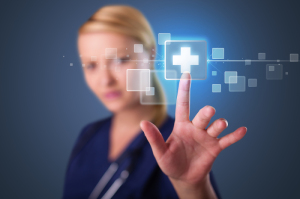From the May 2016 issue of HealthCare Business News magazine
By Bipin Thomas
The U.S Department of Health and Human Services is projecting a near-term shortage of primary care physicians (PCPs) that amounts to an anticipated shortfall of 20,400 PCPs by 2020. The patient experience in the U.S. is clearly set to become a lot less hands-on. For many, technology will close that gap. Technology, after all, can take care of many of the patient’s strictly medical needs: it assists in diagnosis, enables advanced forms of surgery and optimizes the delivery of care. Health care professionals are expected to provide a compassionate, high quality and safe environment for promoting healing on a more fundamental level. The comprehensive focus on human elements fosters harmony of the mind, body and spirit — a harmony that some studies suggest can accelerate the healing process.
Today’s patients are not willing to compromise high touch for high tech — they expect both. The burden of meeting those expectations in the absence of adequate PCP staffing will almost certainly fall to nurses. Nurses who can combine technological knowledge with traditional bedside experience will become even more valuable in this new context. So where are the opportunities for nurses with technology competence? Here are a few areas where the combination is already making an impact.
Transitioning to home-based care
Hospital-based nurses are currently leveraging today’s user-friendly technology platforms to help patients make the transition from the hospital to their home. This process involves several steps:
• Developing an electronic care plan.
• Obtaining electronic consent from patients.
• Configuring medical devices for patient monitoring.
• Assisting patients with the use of medical devices and smart sensors until they are able to utilize them independently.
• Assigning the patient educational videos.
• Analyzing each patient’s electronic database on a regular basis.
Nurses who master technology-enabled remote patient monitoring platforms proactively are extremely valuable: they are the model high-tech practitioners, and hospitals and providers are rightly creating new high-paying positions to attract qualified people to fill them. Those organizations will be rewarded for attracting and retaining talent in these positions, as they will help implement advanced care interventions and thus reduce patient readmissions.
Real-time monitoring of current patients
Nurses are already on the front lines of patient care, but they can make even more of an impact when they are empowered to adjust instructions and prescriptions based on real-time monitoring. Nurses need to be certified on the specific EMR system used at the hospital, and must master the patient monitoring platform and its configuration screen. Nurses today regularly use these systems to schedule personalized alert messages and provide specific instructions for patients.
